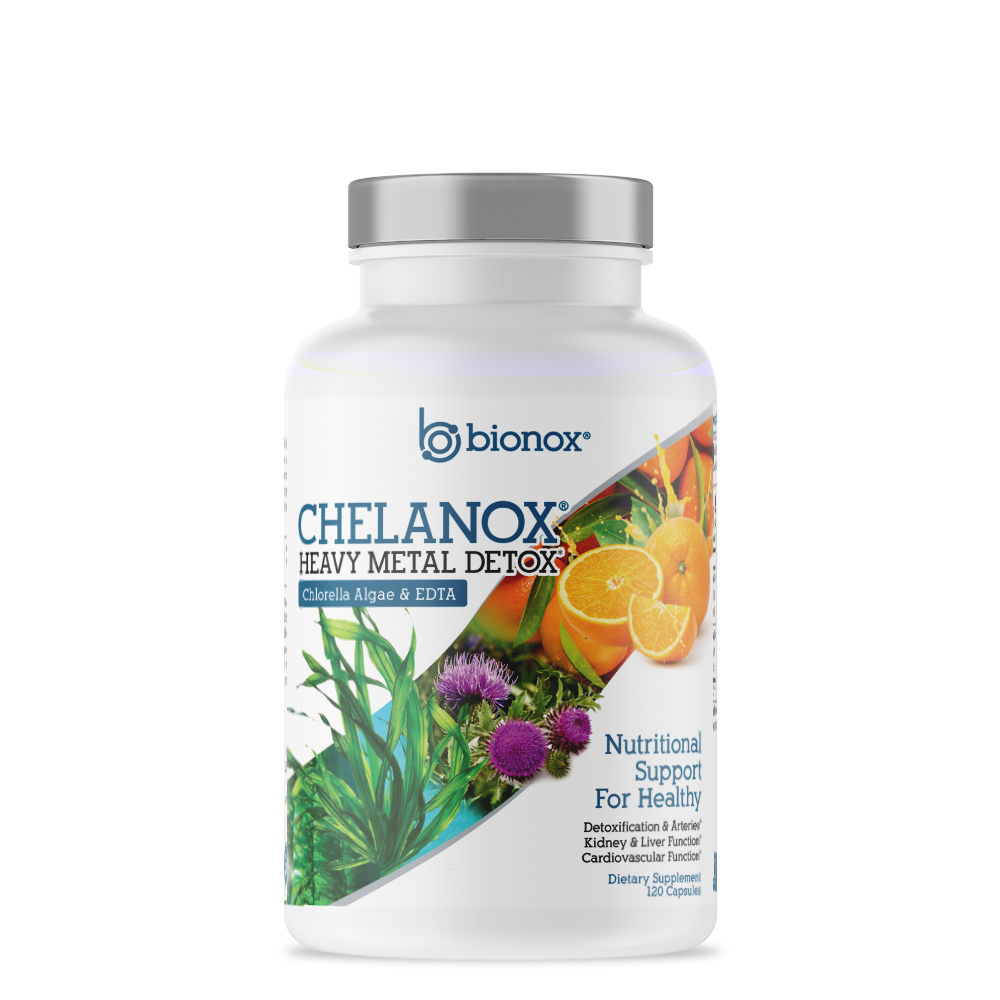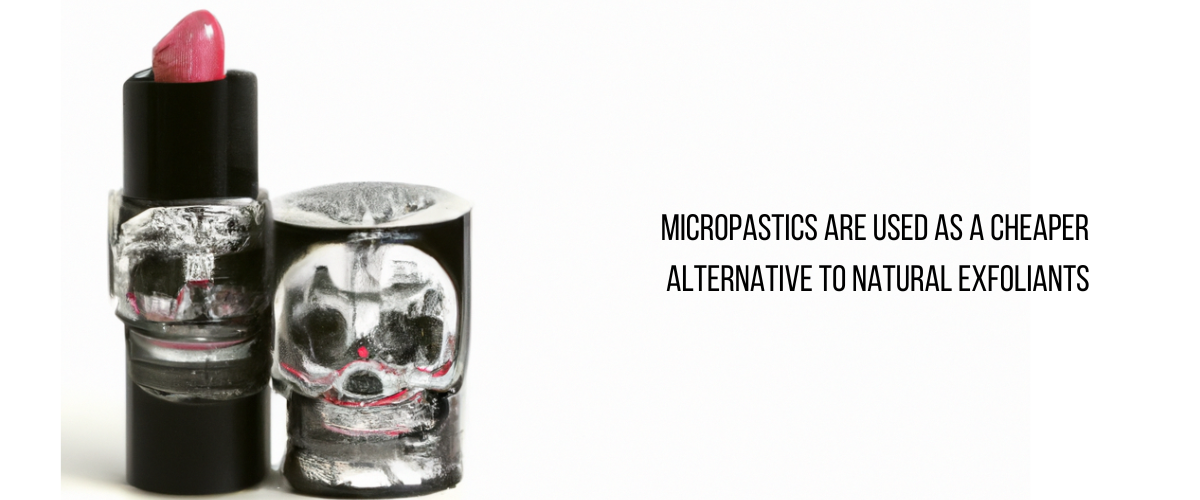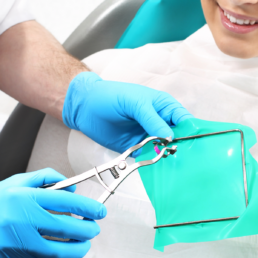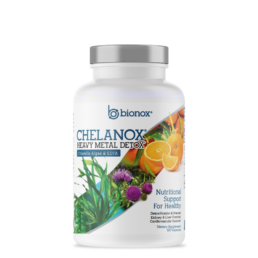Ultimate Guide to Aluminum Detox Protocol with Chelanox
Exploring an effective aluminum detox protocol is crucial in today’s world, where exposure to this metal is more common than we might think. Chelanox by Bionox offers a groundbreaking solution, harnessing the power of its unique ingredients. This post delves into how Chelanox utilizes EDTA, Chlorella Algae, Modified Citrus Pectin, Cilantro Leaf Extract, Shilajit, Zeolite, NAC, Alpha Lipoic Acid, Uva Ursi Leaf Powder, Milk Thistle Seed Powder, Cellulose, Silica, and Vegetable Stearate to combat aluminum toxicity.
A Closer Look at Chelanox’s Ingredients
EDTA: The Chelation Champion
EDTA stands at the forefront of the aluminum detox protocol. It binds to heavy metals in the bloodstream, facilitating their removal. This process is essential for reducing the body’s aluminum burden.
Chlorella Algae: Nature’s Detoxifier
Renowned for its detoxifying properties, Chlorella Algae aids in removing heavy metals from the body. It supports the detox process by binding to toxins and promoting their excretion. Because it is natural and easy to use, it is an amazing tool you can use to aid any detox.
Modified Citrus Pectin: The Binder
Modified Citrus Pectin is pivotal in the detox protocol because It traps heavy metals, preventing their absorption and aiding in their removal from the body.
Cilantro Leaf Extract: The Herbal Detox
Cilantro Leaf Extract is known for its ability to chelate heavy metals. It supports the body’s natural detoxification processes, making it a key component of the Chelanox formula. Because it has literally thousands of years of use as a food, it’s super safe and well researched.
Shilajit: The Revitalizer
Shilajit, rich in fulvic acid, enhances the body’s ability to flush out toxins. It supports overall health and wellness, making it an invaluable part of the detox protocol.
Zeolite: The Absorber
Zeolite’s unique structure allows it to trap heavy metals and toxins, facilitating their removal from the body. Its inclusion in Chelanox underscores its detoxifying capabilities.
NAC and Alpha Lipoic Acid: The Antioxidant Duo
Both NAC and Alpha Lipoic Acid are potent antioxidants. They protect against oxidative stress and support liver health, playing a critical role in the detox process.
Uva Ursi Leaf Powder and Milk Thistle Seed Powder: The Supportive Herbs
These herbs support the urinary and liver systems, respectively. They enhance the body’s natural detoxification pathways, promoting overall health.
The Role of Cellulose, Silica, and Vegetable Stearate
Cellulose, Silica, and Vegetable Stearate ensure the stability and delivery of Chelanox’s active ingredients. They play a supporting role in the detox protocol, ensuring the efficacy of the formula.
Implementing the Aluminum Detox Protocol
Adopting the aluminum detox protocol involves a holistic approach. Incorporating Chelanox into your daily routine is a key step because it has everything you need. However, it’s also important to minimize exposure to aluminum, stay hydrated, and maintain a balanced diet rich in antioxidants.
Conclusion
Chelanox’s innovative blend of ingredients offers a comprehensive solution to aluminum detox. By understanding the role of each component, individuals can effectively reduce their body’s aluminum burden. Embracing the aluminum detox protocol with Chelanox is a proactive step towards enhanced health and well-being.
In exploring detox solutions, Chelanox stands out as a leader. Its meticulously selected ingredients offer a safe and effective path to reducing aluminum exposure so they help in promoting overall health.

Get 20% Off Chelanox and Try Risk Free!
Microplastic Detox: Uncovering the Hidden Plastics in Beauty Products
A Microplastic Detox You Need To Know About!
Discover the Hidden Dangers of Microplastics in Your Daily Beauty Routine
Did you know your daily beauty routine might be contributing to a global issue? Yes, microplastics, those tiny particles smaller than a grain of rice, are lurking in your favorite cosmetics, body washes, and even toothpaste.
Used as a cheaper alternative to natural exfoliants, these minuscule plastics are not only harmful to the environment but could also pose risks to your health.

The Unseen Threat in Your Toothpaste
Take a closer look at your toothpaste. See those sparkling little blue dots? They might be microplastics, specifically polyethylene. This form of plastic, the most popular worldwide, adds that glittery look but at a significant environmental and health cost. Seems insane this is not illegal but greed rules the day, and your health is just not important to the companies who use this.
The Truth About Face and Body Washes
Feeling clean might come at a hidden price. Face and body washes often contain polypropylene microbeads. These tiny plastic particles act as exfoliants, but they eventually find their way into our waterways, contributing to pollution in rivers, lakes, and oceans.

Cosmetics: A Plastic Beauty
Almost every makeup product, from blush and foundation to mascara and lipstick, might contain plastics. The list include the likes of polyethylene, polypropylene, or polyethylene terephthalate (PET). Even the glitter in your makeup is essentially tiny pieces of plastic. People are adding to microplastic pollution with every use of these products.
The Impact on Health and Environment
Before these microplastics wash down the drain, they can pose significant health risks. Inhaling microplastics has been linked to asthma, heart disease, and even cancer. Recognizing the threat, the United States introduced the Microbead-Free Waters Act in 2015, aiming to reduce the use of microbeads in cosmetic products. Notice the word “reduce” and not stop. So buyer beware!
Making a Difference with Microplastic Detox
As consumers, we play a crucial role in combating microplastic pollution. By choosing products without polyethylene, polypropylene, or PET, we can make a more environmentally friendly choice. Opting for natural alternatives not only benefits the planet but also supports our well-being.

Chelanox by Bionox: Your Ally in Microplastic Detox
In your journey towards a microplastic detox, consider integrating products like Chelanox by Bionox into your routine. This innovative solution supports your body’s natural detoxification processes. It works by helping to mitigate the impacts of environmental pollutants, including microplastics. By choosing environmentally friendly products and supporting your body’s health, you can make a significant difference for both your well-being and the planet.
A Call to Action
Living entirely without plastics might be a daunting task, but being mindful of our choices can lead to substantial positive changes. Next time you’re shopping for beauty products, take a moment to read the labels. Opt for products that are free from harmful microplastics and consider how your daily routine can contribute to a healthier planet. Together, we can make a difference in the fight against microplastic pollution.

Remove Dental Amalgams The Safe Way
How to Safely Remove Dental Amalgams: A Comprehensive Guide
Dental amalgams, more commonly known as “silver fillings,” have long been debated due to their mercury content in medical and dental communities. If you’re contemplating removing your amalgams, it’s vital to ensure the procedure is done safely and by a qualified professional. Moreover, post-procedure detoxification can further safeguard your health. Here’s a step-by-step guide on how to proceed.
1. Understanding the Need To Remove Dental Amalgams:
Firstly, it’s important to understand why you might want your amalgams removed. Many individuals choose to do so due to concerns about mercury exposure, while others may be driven by aesthetic considerations or dental issues.
Dental fillings, particularly amalgam fillings, have been the subject of extensive research and discussion due to their potential effects on human health. Dental amalgams contain mercury, which can release mercury vapor. Inhalation of mercury vapors can have harmful effects over time. Other types of fillings, such as composite resins, porcelain, or gold, have their own concerns, albeit less controversial than amalgams.
Here are some studies and their findings regarding the health effects of dental fillings and materials and why you may want to remove dental amalgams:
- Dental Amalgam and Mercury Exposure:
- Summary: This study investigates the potential neurotoxic effects of mercury exposure from dental amalgam fillings. Some evidence suggests that prolonged exposure to low levels of mercury can have neurotoxic effects, especially in children and pregnant women.
- Link: Bellinger DC, et al. (2006). Neuropsychological and renal effects of dental amalgam in children: a randomized clinical trial. JAMA.
- Composite Resins and Bisphenol A (BPA) Release:
- Summary: Composite fillings can sometimes release small amounts of bisphenol A (BPA), a chemical with potential endocrine-disrupting properties. This study evaluates the potential risks of BPA release from dental resins.
- Link: Fleisch AF, et al. (2010). Bisphenol A and related compounds in dental materials. Pediatrics.
- Dental Amalgam and Neurological Effects:
- Summary: A comprehensive review of multiple studies examining the potential neurological effects, including mood disorders, cognitive impairments, and others, linked to dental amalgam fillings.
- Link: Bernhoft RA. (2012). Mercury toxicity and treatment: a review of the literature. J Environ Public Health.
2. Choosing the Right Dentist:
Selecting the ideal dentist is crucial when it comes to amalgam removal.
- Credentials Matter: Look for a dentist trained in safe amalgam removal. Organizations like the International Academy of Oral Medicine and Toxicology (IAOMT) offer certifications in this area.
- Safety Protocols: The right dentist should employ stringent safety measures. This includes using rubber dams to prevent mercury particles from being ingested, specialized air filtration systems, and protective wear for both the patient and dental staff.
- Personal Recommendations: Sometimes, word-of-mouth references can be invaluable. Ask friends or family if they’ve had a positive experience with a particular dentist during amalgam removal.
3. The Removal Process:
Once you’ve settled on a dentist, it’s time to understand the procedure.
- Step-by-Step Removal: A trained dentist will often remove the amalgam in chunks rather than drilling it out in a way that generates a lot of heat and vapor, minimizing mercury exposure.
- Use of Additional Barriers: Beyond the rubber dam, some practitioners might use saliva ejectors and even external oxygen sources, ensuring you aren’t inhaling mercury vapors during the procedure.
4. Detoxification After Amalgam Removal:
Post-removal, some individuals opt for detoxification strategies to rid their bodies of any residual mercury. One popular option is Chelanox.
- How Chelanox Works: Chelanox is believed to chelate, or bind to, mercury, facilitating its removal from the body. This can be especially beneficial after amalgam removal, even with the most careful procedures.
- Administration: A healthcare professional typically advises on the correct dosage and regimen. It’s essential to adhere to these guidelines for optimum results and safety.
- Monitoring: Like any detoxification process, monitoring your body’s response is crucial. Regular check-ups and consultations with your healthcare provider can ensure you’re on the right track.
In Conclusion:
While dental amalgam removal might seem daunting, the process can be both safe and beneficial with the right preparation and post-care. Whether driven by health concerns or other reasons, always ensure you make informed decisions and work with qualified professionals. Remember, your health is paramount; every step should reflect the best care and attention possible.
Amalgam Fillings Mercury Detox Supplements
Why would you need Amalgam Fillings Mercury Detox Supplements? If you are reconsidering using your old silver amalgam fillings, It’s quite an appropriate thought! The potential for health risks associated with mercury fillings is significant!
Studies have shown that mercury vapor can escape from these fillings and enter your bloodstream, posing a potential threat to your health[1].
Now, you may wonder, what’s the harm? Well, for starters, neurological issues have been linked to mercury. It has been studied that there’s a connection between mercury and diseases such as Alzheimer’s and Parkinson’s[2].
The kidneys, too, don’t escape the harm that mercury can cause. Over time, mercury can potentially lead to kidney damage[3]. There are also potential implications for the immune system as per certain research[4].
The removal of amalgam fillings can thus be a step towards better health. You should consult with your dentist and continue your research to make an informed decision.
But the journey doesn’t stop here. There’s more to know. The amalgam fillings, despite their durability and affordability, have a major drawback. They contain about half mercury, which is not healthy. Don’t be misguided by the term “silver fillings” used by dentists.
Further research indicates that low-level exposure to mercury can disrupt reproductive health, impacting menstrual cycles in women and affecting sperm count in men[5].
Mercury exposure from fillings has also been associated with chronic fatigue, depression, and anxiety[6]. It might be the fillings if you are experiencing these symptoms without a known cause.
Additionally, dental amalgam contributes to environmental mercury pollution when not disposed of properly[7].
Replacing amalgam fillings is not a decision to be taken lightly. There can be side effects, such as temporary sensitivities and discomfort. However, considering the potential long-term health benefits, it may well be worth it. It’s always advisable to have this discussion with a professional.
At the end of the day, the decision lies in your hands. Conduct thorough research, ask the right questions, and make an informed choice. After all, your health is of the utmost importance!
Why Do A Mercury Detox After Dental Removal Of Fillings
Post the removal of silver amalgam fillings, the importance of detoxification gains momentum. This is due to mercury exposure during the removal process. Although dentists utilize protective protocols to minimize mercury exposure[8], there is no complete guarantee. So, you need to kickstart a detox regimen immediately after the process.
Now, how to detox? An answer lies in using chelating agents like EDTA, Zeolite, and others[9]. Chelating agents can assist the body in eliminating harmful mercury after the dental procedure has been completed. Check out this product for the best amalgam fillings mercury detox supplement.
Sustaining a balanced diet is crucial too. Certain foods can aid in detoxification by boosting the body’s natural detox system. Garlic, cilantro, and Chlorella are believed to expedite the detoxification process[10].
But let’s not disregard the importance of adequate hydration. Drinking plenty of water assists the kidneys in flushing out toxins. Other lifestyle modifications, such as regular exercise and adequate sleep, can also be beneficial.
Now, how does a dentist perform the removal? They follow a process called Safe Mercury Amalgam Removal Technique (SMART). This includes using a dental dam, high-speed evacuation, and other protective measures to minimize mercury exposure[11].
This removal process can potentially lead to mercury exposure, making a detox plan necessary.
Taking steps towards removing amalgam fillings can bring you closer to optimal health and help possibly prevent many associated health issues. However, remember that each step should be undertaken under professional guidance and research the best options and techniques. Your health is a treasure; let’s preserve it with care!
Serious Heavy Metal Detox Post Dental Removal
As we’ve discussed, detoxification after amalgam filling removal is essential, and that’s where a specially formulated supplement like Chelanox by Bionox can be incredibly beneficial.
Chelanox is power-packed with natural chelating agents like EDTA, Chlorella Algae, and Zeolite[12]. These powerful and natural agents have the potential to bind with the mercury and other heavy metals in the body, forming what we call a chelate complex. The complex, after binding to the bad stuff in your body, is safely excreted when you visit the restroom. This elimination process can help reduce the toxic load in your body, leading to improved health.
Chelanox also contains NAC (N-Acetyl Cysteine), Alpha Lipoic Acid, Uva Ursi Leaf Powder, and Milk Thistle Seed Powder[13]. These ingredients have been shown to support the body’s natural detoxification process, support liver function, and help neutralize oxidative stress, which is just a fancy name for inflammation.
Shilajit, another component of Chelanox, has been studied for its potential to enhance the body’s immune response[14]. A strong immune system can aid the detoxification process and support overall health.
Chelanox’s ingredient profile supports your body’s detox journey after removing amalgam fillings. However, it’s important to remember that every individual is different, and results may vary. Chelanox should be used in combination with careful and professional removal processes. Find a qualified dentist with the best equipment available for the best outcomes.
How can I tell if I need to detox?
Recognizing post-amalgam removal toxicity symptoms can be crucial to ensuring a smooth recovery process and managing your overall health. Potential symptoms could include:
Fatigue: You may feel unexplained tiredness and decreased energy levels.
Neurological Symptoms: These may manifest as mood swings, depression, anxiety, memory loss, difficulty concentrating, or even tremors in more severe cases.
Digestive Problems: You could experience a loss of appetite, nausea, or other digestive issues.
Immune System Issues: An increase in the frequency of infections could indicate a weakened immune system.
Skin Problems: Rashes, itchiness, or other skin issues can sometimes occur.
While these symptoms could be signs of post amalgam removal toxicity, it’s important to note that they could also be related to other health issues. Therefore, it’s essential to consult with a healthcare provider if you notice any adverse symptoms after amalgam filling removal.
Should I take a mineral supplement with Chelanox?
Using a mineral supplement with Chelanox, could indeed be a very good idea. Some chelating agents can bind to necessary minerals in the body, potentially leading to their elimination along with the harmful heavy metals.
A high-quality mineral supplement can help replenish these essential minerals, maintaining your body’s balance. However, this should be discussed with your healthcare provider before beginning any new supplement regimen to ensure it suits your specific needs and circumstances.
It’s also worth mentioning that while Chelanox is designed to support the body’s detoxification process, it’s not a substitute for professional medical advice, diagnosis, or treatment, always seek the advice of your physician or other qualified health provider with any questions you may have regarding a medical condition.




